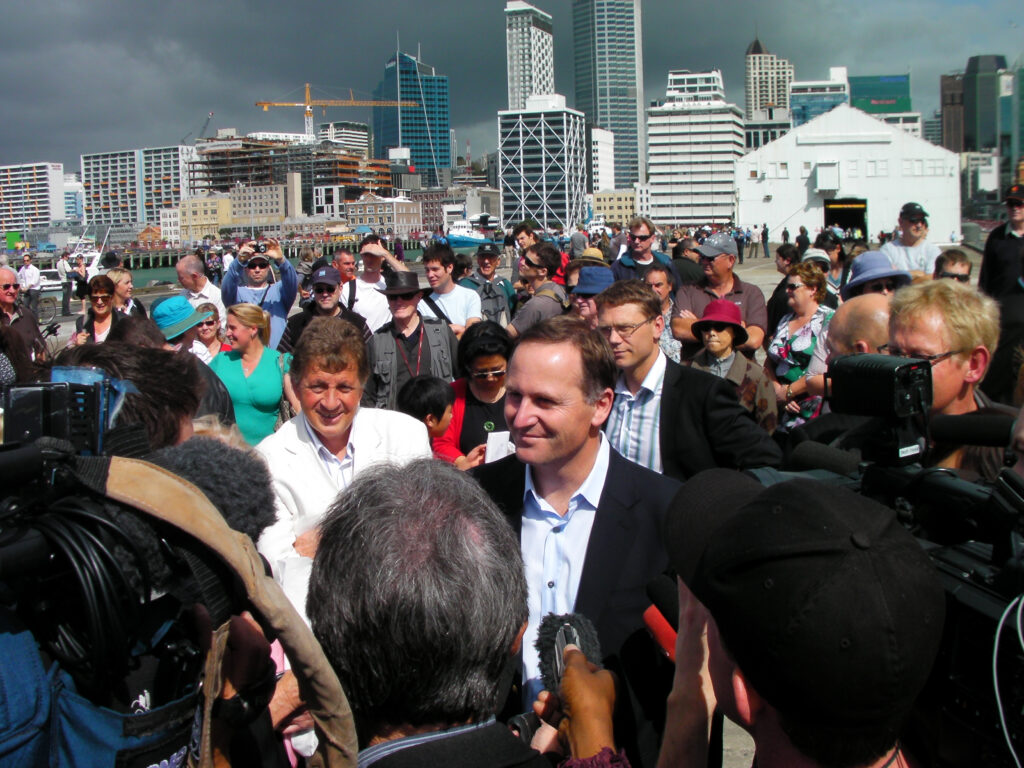Auckland Transport and the People’s Wharf
the relentless empire and its ambitions for Queens Wharf

Many Aucklanders would have thought ‘Yes!! on hearing Mayor Wayne Brown’s call for the breakup of Auckland Transport. But one shouldn’t get one’s hopes up too high. Same thing with the NZ First private members bill to bring AT under direct control of Auckland Council – just as transport used to be in Auckland and still is everywhere else in New Zealand. As Deputy PM Winston Peters told parliament, ‘This Bill is about bringing democratic accountability back to Auckland’s transport system’… But when and if this ever becomes law is another matter. I hear the Ministry of Transport is energetically lobbying to protect the monster it helped impose on Auckland 15 years ago. Still, at least the politicians know the public wants something done about AT. That being said, changes can be made to AT right now – if the council was of a mind to, stripping away functions AT has accumulated over and above its statutory roles. I’ve made suggestions to the mayor’s office about these to at least make a start. We shall see.
Meanwhile AT, showing no signs of being fazed by any of this, is relentlessly pushing on expanding its empire. Not for nothing does AT get to spend the largest proportion of council’s income, $3.4bn this year.
AT’s latest ambition is to take ownership of a new harbour ferry fleet. Interestingly ferries in Auckland unlike buses and trains, have always been privately owned. Of course, AT has no intention of re-establishing publicly-owned public transport. On the contrary, while its ferry ‘nationalisation’ plan has Auckland ratepayers paying for a new fleet of ferries in addition to the three $20m each ‘zero emission’ (electric) ferries AT is currently having built; AT intends to hand the operation of these and the rest of its intended fleet to Fullers 360, the Scottish-owned near monopoly ferry operator. It’s the standard neoliberal formula, socialise the costs – privatise the profits. As part of this $215m plus scheme, AT plans to build three-storeys-high electric charging units at the eastern outer-end of Queens Wharf.
Now Queens Wharf was purchased jointly from Ports of Auckland by the Auckland Regional Council and the government in 2009. The ARC’s objective was to open the red fence, which for 90 years had locked Aucklanders out from Queens wharf, to provide much needed waterfront public open space, as well as for a cruise ship terminal. The government had a rather different but compatible enough agenda, to use the wharf as a fan base, ‘party central’ as the PM John Key called it, for the 2011 Rugby World Cup. I recall the negotiations with the port company were difficult and protracted but in the end we got there. In September 2009 Queens Wharf was opened to the public with PM John Key, and myself as ARC chairman, making celebratory speeches to a crowd of jubilant Aucklanders. I even recall proclaiming Queens Wharf ‘The People’s Wharf’! After a public design competition for a new cruise ship terminal failed to impress, I concluded we should instead keep the then dilapidated, but heritage-quality. former cargo shed, Shed 10, and refurbish it as the new terminal. In 2012, former CCO Waterfront Auckland, completed a substantial but cost-effective renovation, enabling Shed 10 to resume its maritime working career as a fit-for-purpose cruise ship terminal.
Since the demise of Waterfront Auckland, AT which has an office building on inner Queens Wharf, has expanded its control over the wharf. At some stage it shoved taxi ranks off downtown streets and onto the wharf. In 2019 it built six new ferry births along the western side. Now it intends to expand its footprint further with these 8 -metre-high visually intrusive, battery chargers, covering 350 square metres, and hundreds of metres of cabling, and is seeking resource consent to do so. Members of the public, led by the City Centre Residents Group, is opposing AT’s industrialisation of this valued public open space. They argue the chargers should be located on the inner western side of the wharf, much closer to the ferries they are meant to serve. I agree, if this hugely expensive approach is the only feasible option – but I understand there are way more economic and less intrusive ways to charge these ferry e-batteries, as happens in Wellington.
While AT is never reluctant to expand its empire, speaking as a former director, cost-efficiency and accountability to the public, are not qualities I normally associate with the organisation. As Winston Peters aptly put it ‘AT has been a failed experiment from the start.’
This article has been published in the November 2024 issue of Ponsonby News



